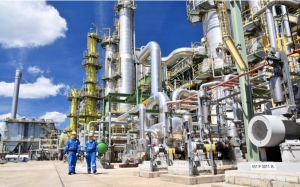


(Posted on 28/03/23)
Fertilizers Europe has called on EU co-legislators to ensure that clean fertilizer and ammonia production continue to be produced in Europe.
Fertilizers Europe represents the interests of the majority of mineral fertilizer manufacturers in the European Union. In a statement they said, “ To keep this key element of food security, the legislators should include low carbon hydrogen in the RFNBOs industry target. Fertilizers Europe represent 80% of mineral fertilizers in Europe and around 90% of ammonia production.
Hydrogen is used to produce ammonia: the main building block of fertilizers. As a result, the Fertilizer Industry is both one of the main users and producers of hydrogen in Europe (40%), around 3 million tonnes per year. Ammonia, which has a higher hydrogen density than hydrogen itself, will be a critical component of any future hydrogen economy, as it will have a role to play not only in fertilizers production but also as shipping fuel or energy storage solutions. Ammonia is one of the first industrial sectors that will need to do a significant shift towards renewable hydrogen. Policy-makers should ensure that this change takes place without risking continuous EU production of this key intermediate.
If no ammonia is produced in Europe, we risk substituting one dependency with another having serious repercussions on food security and strategic autonomy. As one of the sectors most impacted by the new target on RFNBOs use set on industry by the Renewable Energy Directive, we believe that such a target needs to be achievable. A number of conditions must be met to ensure that this target is achieved, foremost of which is access to affordable renewable electricity which unfortunately diverges widely in different Member States, where ammonia is currently produced. Forgetting these differences would be harmful for the European industry. This is why low-carbon hydrogen’s potential for decarbonizing European industry should be fully accounted for, either by including it in RED III target itself or by excluding low-carbon hydrogen from the denominator. This will send a positive signal for the development and production of clean hydrogen while at the same time keeping a binding target for RFNBOs.
We remain ready to engage with the Commission, Parliament and Member States to further discuss this proposal and its benefits for the European food security, clean transportation and the European Union as a whole.”
ADM and Mitsubishi Corporation have signed a non-binding memorandum of understanding to form a strategic... Read more
ESL Shipping and global steel manufacturer SSAB have agreed on a multi-year extension of the agreement... Read more
Anglo American’s Sakatti copper and polymetallic project in Finland has been designated as a &... Read more
FEFAC, representing the EU compound feed and premix manufacturers, noted with deep concern the announced... Read more
Catering to the growing demand from India’s confectionery, infant formula, and dairy sectors,... Read more
Khalifa Economic Zones Abu Dhabi – KEZAD Group, the largest operator of integrated and purpose... Read more
Rio Tinto will invest $1.8 billion1 to develop the Brockman Syncline 1 mine project (BS1), extending... Read more
Catherine Cobden, President and CEO of the Canadian Steel Producers Association (CSPA), has released... Read more
Enough domestic ferrous scrap is available for electric arc furnace (EAF) steelmakers to supply nearly... Read more
Cargill’s Ocean Transportation business and leading tanker shipping company, Hafnia, have joined... Read more